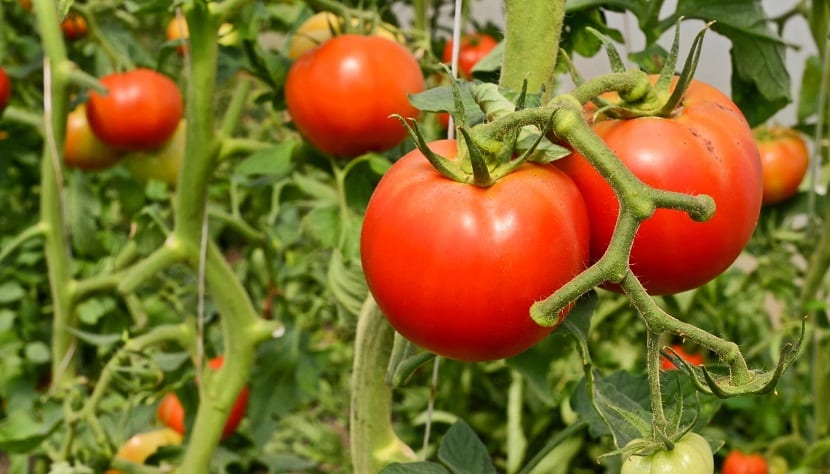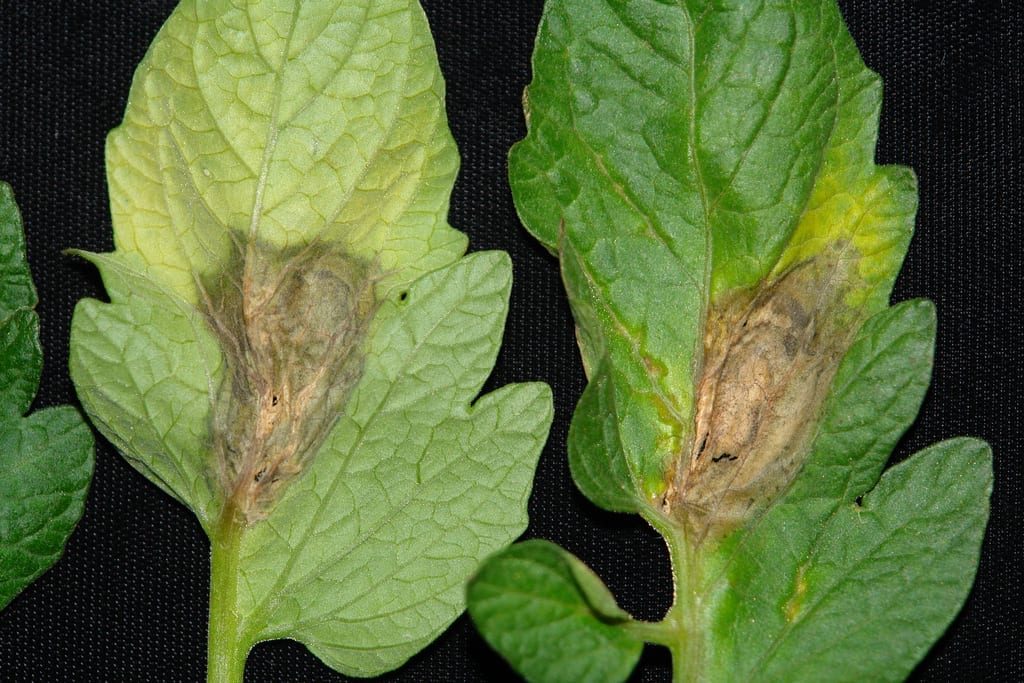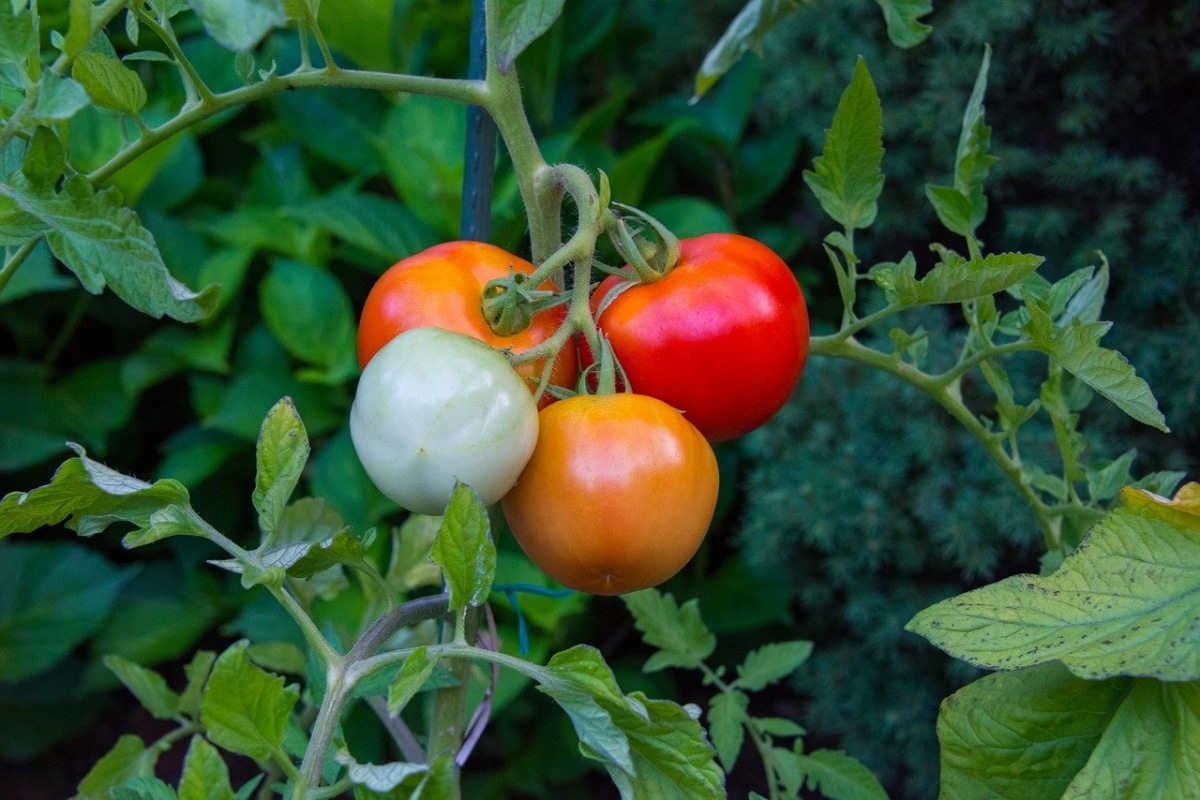
Tomatoes are the fruits of plants that are grown a lot when winter is almost over, and even longer if you have a greenhouse to keep them out of the cold. However, although they grow very fast and are very productive, the reality is that there are several diseases that can affect them.
Fungi, viruses and bacteria are always lurking, so knowing the different types and their symptoms will be very useful to have really excellent harvests. Let's see what are the main diseases of tomatoes and how are they treated.
alternariasis
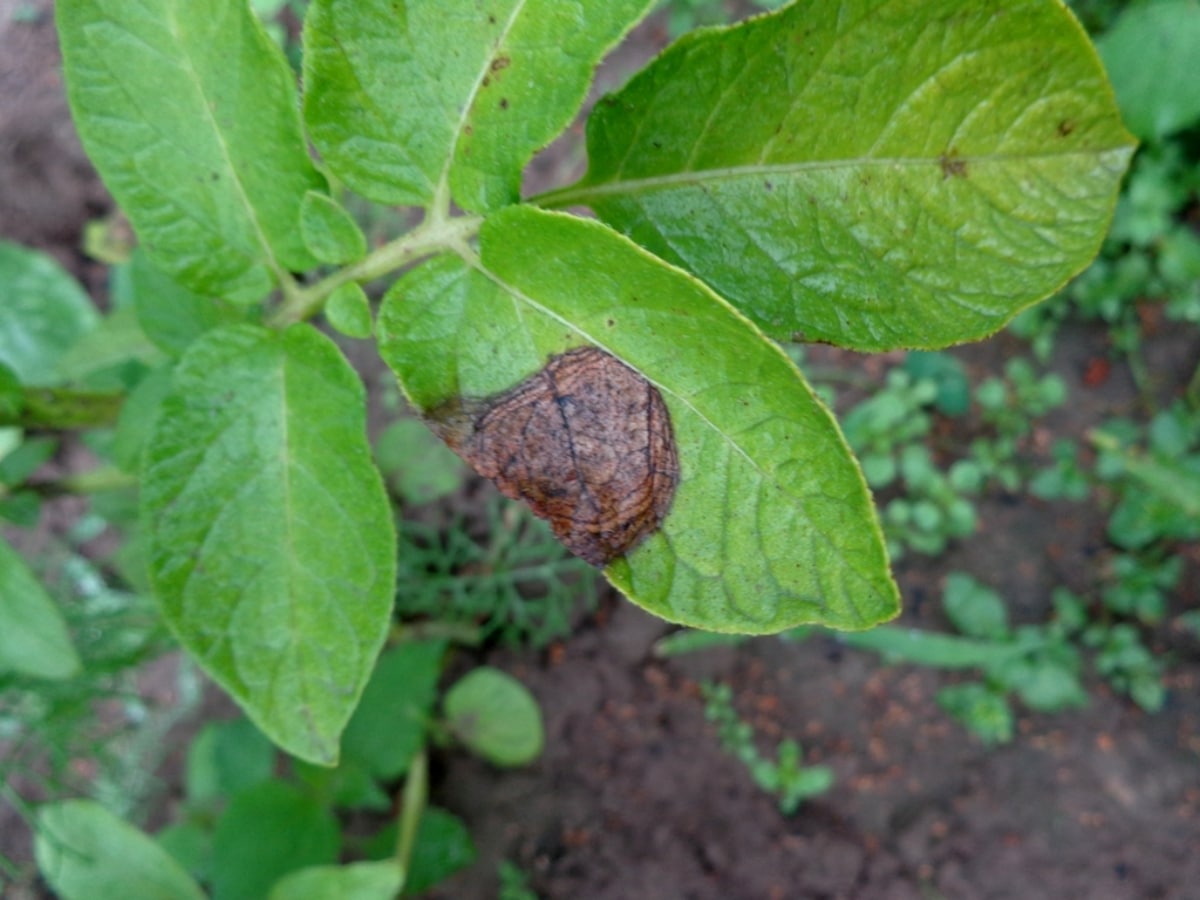
Image - Wikimedia / AfroBrazilian
La alternariasis it is a fungal disease that affects many types of plants. The fungus that attacks tomato plants is usually the Alternaria Solani. Like all mushrooms, they favor humid and warm environmentsSo we have to be a little vigilant when we grow these plants.
Symptom
- Circular spots on the leaves: they also have very sharp edges.
- Long black spots on the stem: so they can be easily broken.
- Fruits with brownish spots: sometimes dark.
Transmission
The treatment involves taking a series of measures in order to try to eliminate the problem. These are: to control the waterings a lot so as to avoid overwatering, and treat the plant with fungicides such as Mancozeb or that they carry copper.
fusarium
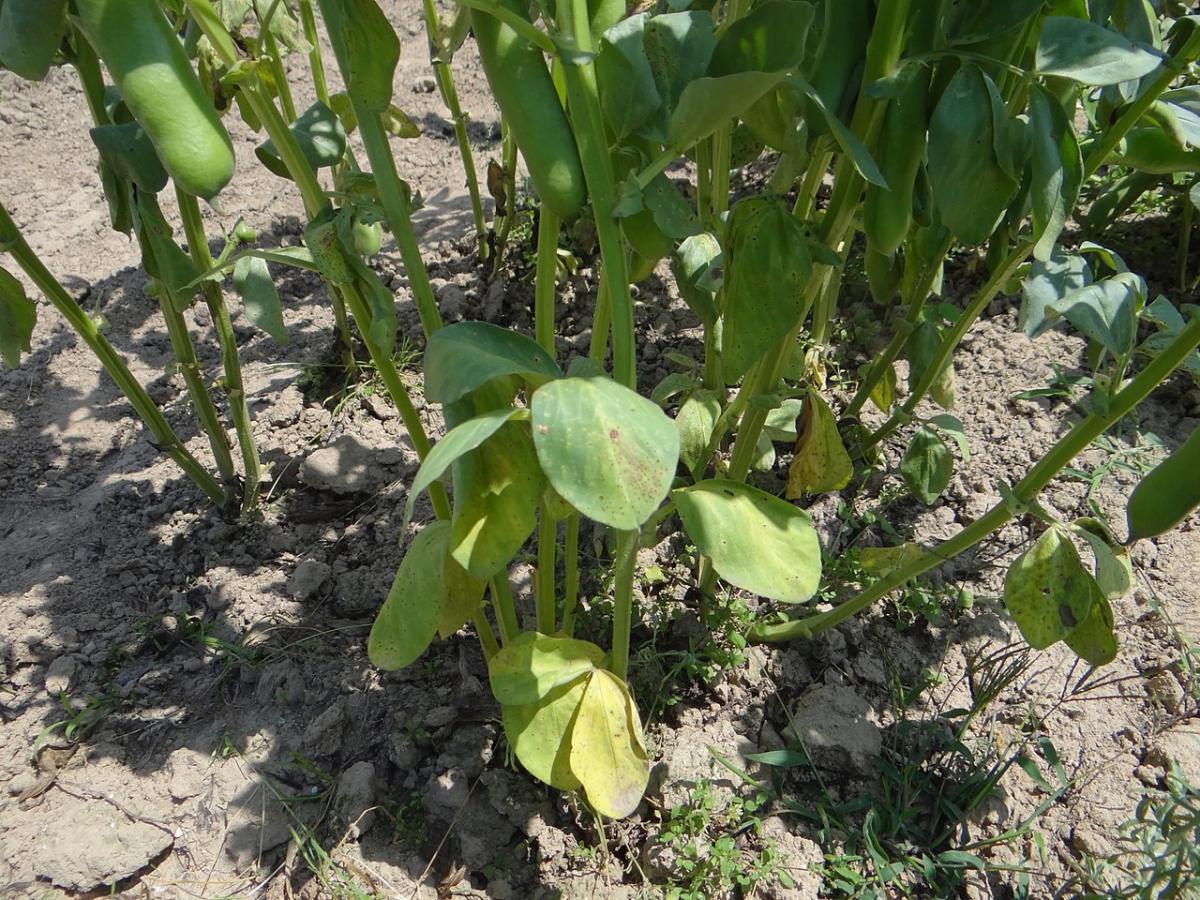
Image - Wikimedia / Jerzy Opioła
Fusarium disease is another fungal disease that transmits it mainly to the Fusarium oxysporum. Can easily pass from one plant to another through the rootsSo if we grow tomato plants in the orchard and we see one that is starting to be bad, we will have to take urgent measures.
Symptom
- Yellowing: it begins with the oldest leaves (the lower ones) and spreads throughout the plant.
- General wilt: the plant gradually dries up.
- The inside of the stems turns dark: this is due to the advancement of the disease.
Transmission
Treatment with fungicides containing Etridiazole, or whatever is root. Copper powder also works.
Mildew
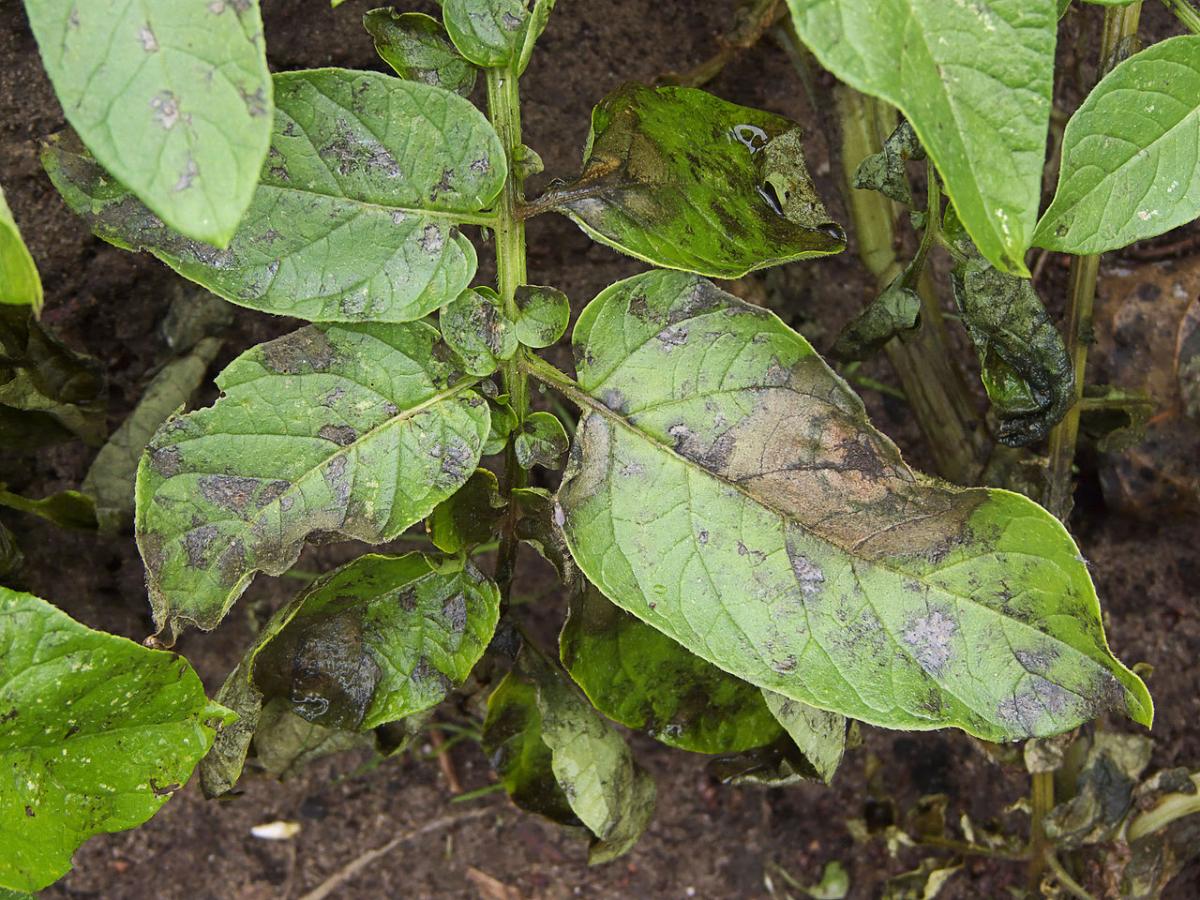
Image - Wikimedia / Rasbak
El mildew it is a disease transmitted by the fungus Phytophthora infestans. If you grow other types of plants in addition to tomato plants, you may have seen what symptoms it produces on more than one occasion. Attacks a wide variety of species, and of any age.
Symptom
- Dark spots with irregular shape on leaves: they get bigger as the disease progresses.
- Brown spots appear on the fruit: and they remain without being able to be consumed.
Transmission
You have to remove the affected parts, and treat plants with specific fungicides (on sale here), or containing copper. It is also recommended to remove weeds and prune the tomato plants from time to time so that they are well ventilated.
Powdery mildew
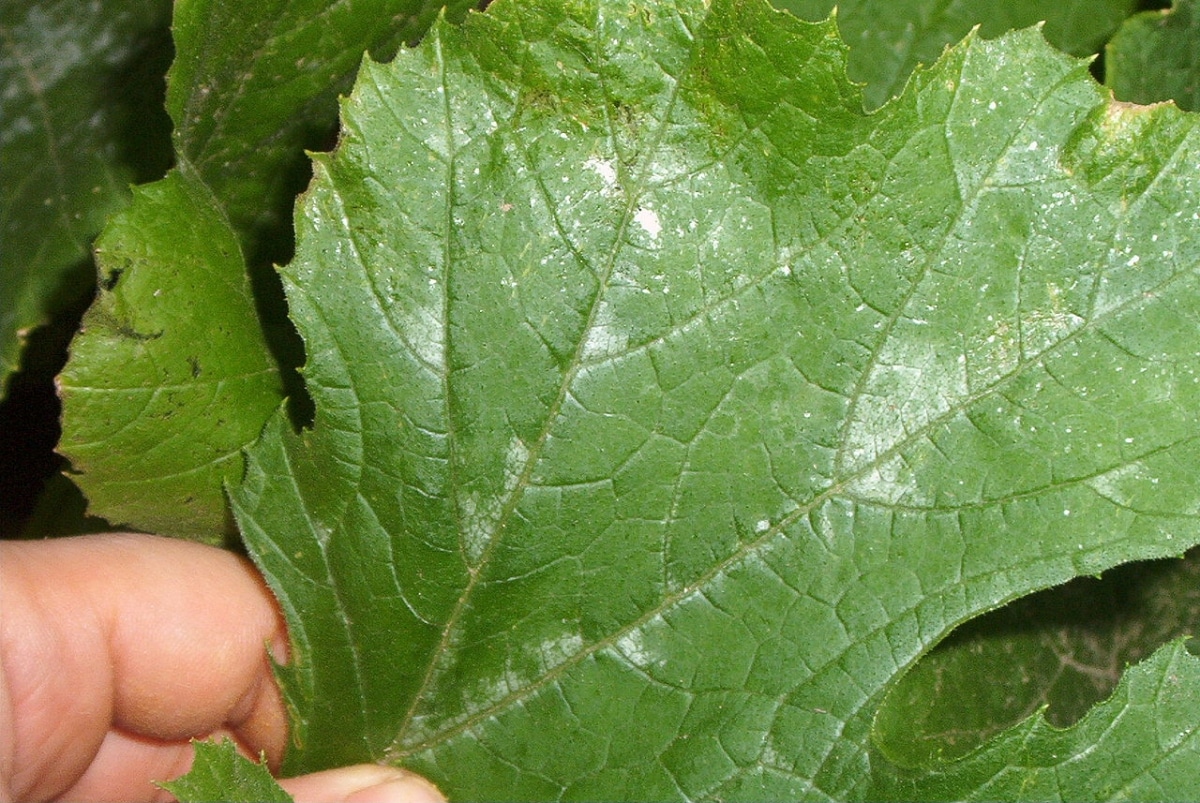
Image - Wikimedia / RoRo
El powdery mildew It is a disease transmitted by the fungus in tomatoes tauric leveillula. Unlike mildew, this only affects the leaves so the symptoms are the ones we are going to tell you about now.
Symptom
- Grayish or whitish spots on the leaves: they are spreading until said leaves turn black.
- General weakness: with less and less foliage, the plant weakens.
Transmission
It's advisable dealing with fungicides like copper sulfate or powdered sulfur (on sale here). Likewise, the affected parts should be pruned to prevent the disease from spreading further.
Gray rot
Gray rot is a disease transmitted by the fungus species Botrytis cinerea. It is also one of those that affects a large number of plant species, both garden and ornamental.
Symptom
- Brownish spots on leaves and flowers: the leaves are running out of green pigment, so the plant weakens. Flowers can abort.
- Rotten fruit covered by a greyish hairiness: it starts first in one part, and then it spreads throughout the tomato.
Transmission
Several things must be done, which are: cut the parts that are affected with clean scissors, remove weeds, and treat tomato plants with fungicides that carry copper (for sale here).
Virus
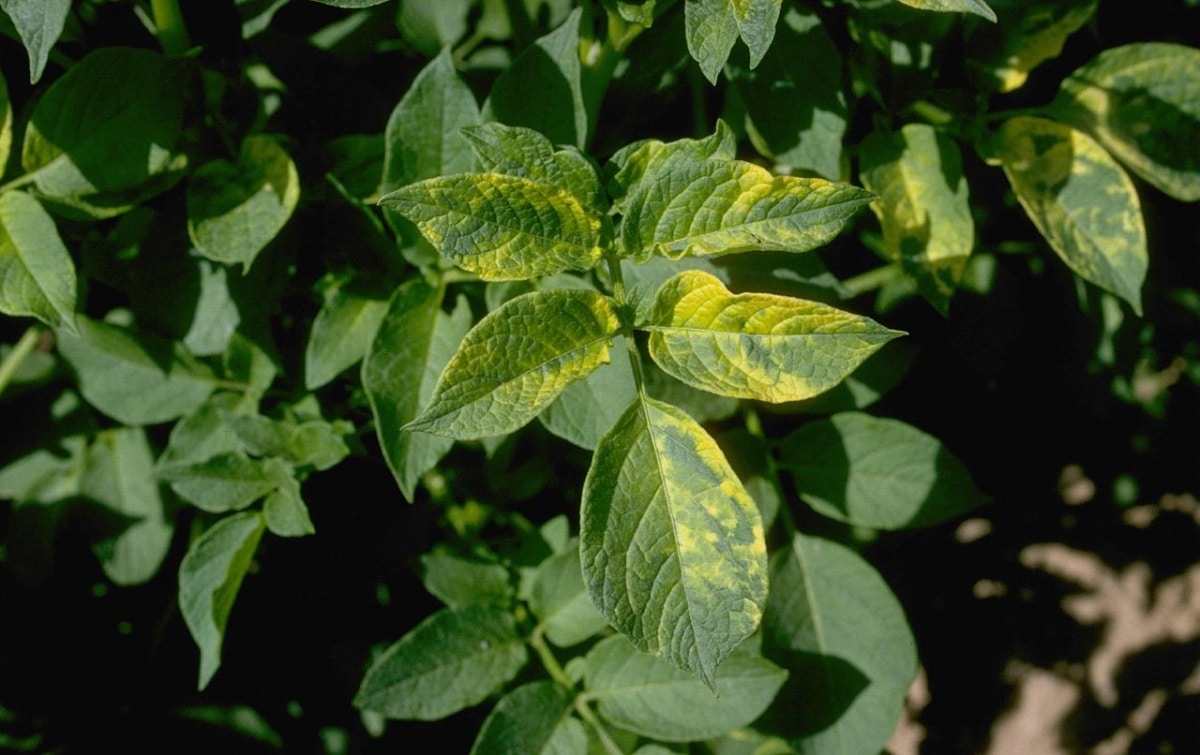
Image - Wikimedia / Howard F. Schwartz
Viruses are microorganisms that usually use parasitic insects as hosts, such as aphids or whiteflies, without forgetting thrips. Once they bite the plant or its fruit, the virus enters the organism of our crops and that's when the symptoms start. It is difficult to eradicate them, but they can be prevented.
Among the viruses that most frequently attack tomatoes we have:
- Tomato tan virus
- Tomato yellow curl virus
- Tomato branched dwarf virus
- Potato Y virus
- Cucumber mosaic virus
Symptom
The symptoms that we will see in our tomato plants are the following:
- Mosaics on the sheets: that is, on the same sheet we will see spots of different shades of colors (usually green and yellow).
- Chlorotic or black spots on leaves: in extreme cases they will be all over the surface of the leaves.
- Curly leaves- the folded leaves may turn yellowish.
- Deformation and / or appearance of spots on fruits: it is usual that they do not finish maturing and that they remain small, as well as that spots appear.
- Plant weakness: it runs out of energy, so that it may stop growing. Consequently, it weakens and becomes vulnerable to (more) pests and / or diseases.
Transmission
The only effective treatment is prevention as well as pest control. It is important keep plants well watered and fertilized, and that as soon as an insect such as aphid, thrips or whitefly is detected, it is treated, for example, with diatomaceous earth (for sale here), which is a natural insecticide.
If you also need to know the pests that attack tomatoes, click here:
